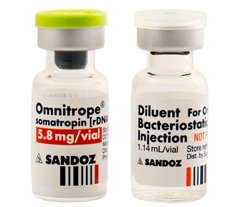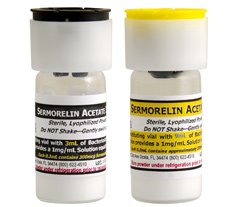Normal Testosterone Levels for Adults

There is a difference between normal testosterone levels for men in their early thirties as compared to when they reach the latter part of their sixties. The same fact holds true for women during different times of their lives. Although it is perfectly natural to experience a decline in testosterone production as people age, what is not acceptable is a physical breakdown in the body resulting from this action.
The normal testosterone levels chart provided for men in the next section highlights how drastic this decline can be, and the effects it can then have on the body. This will also be shown in the final section for women.
What is a normal testosterone level and how does a person know if his or her testosterone meets that requirement?
This is where the answer gets tricky. Medical science does not yet agree on one set of factors that constitutes normal. Instead, it is left up to each laboratory or medical institution to make that determination. For doctors who specialize in hormone replacement therapy, a number of factors go into the diagnosis of Low T, including:
- Testosterone blood levels based on the normal testosterone levels age chart
- A person’s actual symptoms and the severity of such
- Overall health status
These are the things that the HRT specialist will look at when diagnosing and treating Low T. It is not just about whether or not a person falls into the proper range for normal testosterone levels pg/ml measurements. Whereas one individual can test below what would be considered allowable yet have no symptoms of low testosterone at all, another person could still be normal, yet suffer from many of the declines associated with Low T. The second individual is the one who will benefit from testosterone therapy.
Testosterone Levels for Men
A man will typically start to see a decline in his body’s production of testosterone soon after the age of thirty. In most cases, this is only about 1 percent each year – 2 percent at the most. While a 1 percent drop may not seem like much, it equates to 10 percent less testosterone in the bloodstream around age forty. For individuals who experience a 2 percent decline each year, that means 20 percent less testosterone at forty years of age, and 40 percent less by the time a man reaches fifty. That is a significant difference.
Here is the chart for male normal testosterone levels by age – ng/dL measurements:
- Normal Testosterone Levels Age 30
Average Total Testosterone 219 – 1009
Normal Range Total Testosterone 600 – 675
- Normal Testosterone Levels Age 40
Average Total Testosterone 201 – 993
Normal Range Total Testosterone 500 – 550
- Normal Testosterone Levels Age 50
Average Total Testosterone 170 – 918
Normal Range Total Testosterone 400 – 450
- Normal Testosterone Levels Age 60
Average Total Testosterone 156 – 700
Normal Range Total Testosterone 300 – 350
As you can see, what is considered normal for a sixty-year-old man is half of that for one in his early thirties. It is no surprise that a male’s body cannot perform the way it did thirty years earlier if testosterone levels decrease to that point. The goal of testosterone replacement therapy is to raise testosterone levels back up to around 550 ng/dL. This is the level proven most beneficial for men.
Testosterone Levels for Women
The actual normal testosterone levels in women are going to be much lower than those in males. Although testosterone is viewed as the male sex hormone, it is equally important for females to maintain a proper amount of this vital chemical messenger in their bodies. Testosterone helps maintain ideal bone density, muscle mass, brain functions, sexual desire, and even weight. Low T can lead to menopausal symptoms, weight gain, low libido, osteoporosis, dementia, and other serious health concerns. Menopause is the time when a woman typically notices a decline in testosterone production in her body.
Here is the chart for normal testosterone levels in females:
- Women between the ages of 20 and 50 not taking oral estrogen – 0.8 – 10 ng/dL for bioavailable testosterone
- Women between the ages of 20 and 50 taking oral estrogen – 0.8 – 4.0 ng/dL
- Normal total testosterone levels can range from 8 – 60 or 15 – 70 ng/dL depending on the lab running the blood tests
This is why doctors depend on all of the variables already discussed to make their determination of Low T. The symptoms a person has plays a large role in this decision and any treatment that is prescribed for a woman or man.
The services of an experienced hormone replacement therapy specialist are the best option when seeking testing and treatment for Low T or other types of hormonal imbalance. Here at Kingsberg Medical, a national HRT center, we offer convenient local blood analysis, extensive options for affordable treatment, and superior service to men and women throughout the US. As always, confidential consultations with an HRT specialist are always complimentary.
Brian Leeber



















